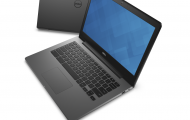Article

Microsoft will be introducing support for better management of graphics processors in computers like the Dell XPS 17 that have Thunderbolt 3 and onboard discrete graphics processors
Windows 10 to give power users more control over their GPUs | Bleeping Computer
My Comments
Previously Windows provided operating-system-level support for handling multiple graphics processors. This is due to the reality of many mainstream laptops being equipped with a discrete graphics processor along with the integrated graphics chipset, providing the ability for users to switch between high-performance or power efficiency depending on whether the computer is on AC power or batteries.

.. so users can choose whether an app uses the onboard discrete graphics processor or a desktop graphics card installed in an external graphics module like this Akitio Node unit
This was achieved either at hardware or graphics-chipset level with special software like NVIDIA Optimus achieving this goal. Then Microsoft recently added this functionality to Windows to allow you to determine whether an application chooses the higher-performance or power-efficient graphics processor.
But in an upcoming feature upgrade, Microsoft will allow fine-tuned control over which graphics chipset applications use. The function is in testing through their Windows Insider beta-testing program.
It will cater towards users who run more than two discrete graphics processors on their system such as a gaming rig with two graphics cards or a laptop / all-in-one / low-profile desktop that has a discrete GPU and Thunderbolt 3 and is connected to an external graphics module. This kind of configuration is primarily offered on Intel-powered premium consumer and business clamshell laptops with a screen size of 15” or more as well as most of the Intel-powered performance-focused laptops.
Here, the users can specify which graphics processor is the one for high-performance computing or can specify that a particular application uses a particular graphics processor.
It is also being driven by the rise of USB4 and Thunderbolt 4, where there will be an effort to make these high-performance USB-C-based peripheral-connection ports ubiquitous and affordable. This could then open up the path for laptops and low-profile / all-in-one desktops to have these ports with their presence being sold on the ability to upgrade the computer’s graphics with an external graphics module.
In the case of a laptop equipped with a discrete GPU and Thunderbolt 3, users may find that the onboard discrete GPU is really a “mobile-grade” type that is intended to be power-efficient but doesn’t perform as good as a desktop graphics card. Here, they would install a desktop graphics card in to a “card-cage” external graphics module and connect it to the computer for better graphics performance.
This may work as a way to allow the use of “fit-for-purpose” graphics processors like a mobile-workstation GPU for a CAD program alongside a gaming-grade GPU for a game. Or a user could run a video-editing program specifically with a graphics processor that is good at rendering the video content while they have another graphics processor available for other tasks.
Personally, I would also like to see Windows offer the ability for users to create an order of preference for high-performance graphics processors either for default high-performance use or for a particular application’s needs. This would come in to its own for graphics-card reviewers who are comparing against their “daily-driver” graphics card, or people who are moving a Thunderbolt-3-equipped laptop between multiple external graphics modules.
Similarly, the control over multiple-graphics-processor setups that Windows is to offer could also evolve towards “task-specific” GPU use. Here, it could be about focusing a graphics chipset towards batch calculation workloads rather than display-focused workloads. This is because people involved with video-editing, media transcoding, statistics, cryptocurrency or similar tasks may prefer to use the kind of chipset that is a “number-cruncher” for those tasks rather than one that excels at interactive computing.
At least Microsoft is working towards answering the needs of power users who deal with two or more graphics processors as part of their personal-computing lives.


